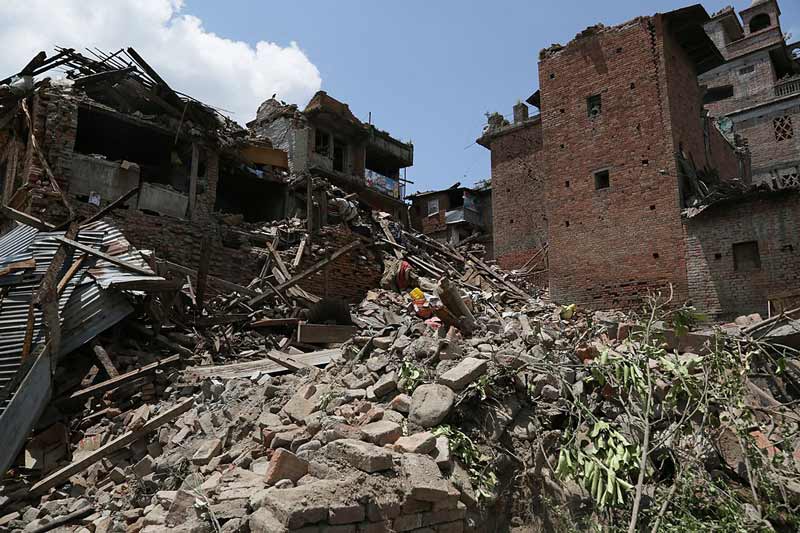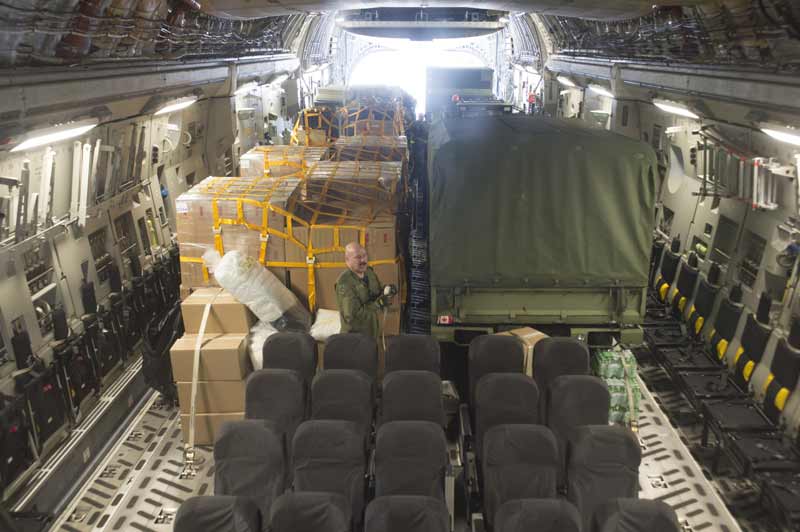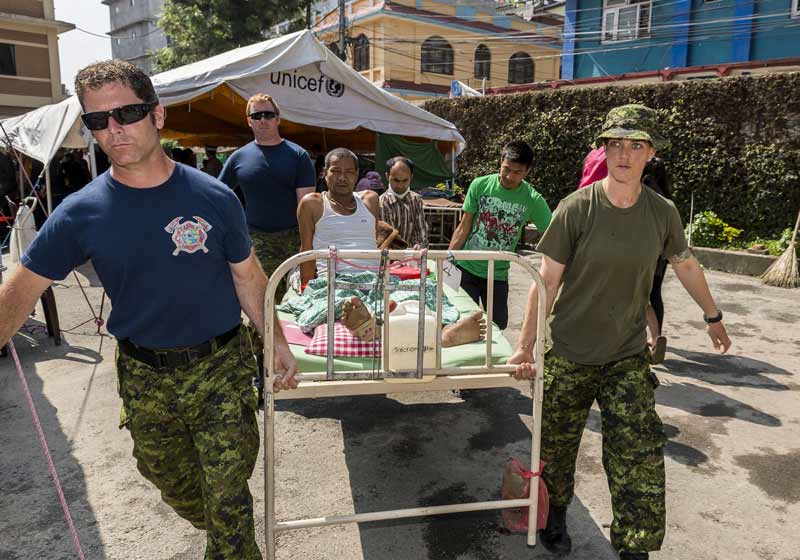
Buildings destroyed after the 2015 earthquake in Nepal.[Wikimedia]
“…things were very devastated.”
Williamson, a senior public affairs officer with the Canadian Armed Forces’ Disaster Assistance Response Team (DART), was referring to the Gorkha earthquake that struck Kathmandu, Nepal, in 2015.
On April 25, a 7.8 magnitude tremor hit the country’s central and eastern regions, its epicentre 34 kilometres east-southeast of the Lamjung municipality and 77 kilometres northwest of the captial. A series of aftershocks hit too, the two largest measuring 6.7 and 6.6 in magnitude.
The damages were catastrophic, with about 9,000 dead, 16,800 injured and, according to a UN report, nearly a quarter of Nepal’s population displaced. The cost of the carnage to property—including some of the country’s most-sacred places such as the Taleju Temple—was estimated at $10 billion.
“The loss of life and the destruction of civilian homes and communities have been overwhelming,” then-Minister of Citizenship and Immigration Chris Alexander told CBC.
DART deployed humanitarian support within a day of the quake.

A multi-purpose engineer vehicle clears a landslide blocking a portion of the Friendship Highway near camp Sumitra, Nepal. (Photo: Master Corporal Cynthia Wilkinson, Canadian Forces Joint Imagery Center)
While the Himalayan region is one of the most seismically active in the world, an earthquake rivalling Gorkha’s size had not been felt by locals since 1988.
Established in 1998, DART functions as an emergency relief organization for natural disasters and political crises beyond Canada’s borders. And while DART had initiated numerous major operations throughout the years, many officers were surprised at the sheer destruction that Gorkha caused.
“You’ll come across villages that basically don’t exist—they’re completely flattened,” UNICEF’s Kent Page told CTV News. “All the hospitals, the health clinics, the schools, the homes [are] destroyed.”
While the Himalayan region is one of the most seismically active in the world, an earthquake rivalling Gorkha’s size had not been felt by locals since 1988.
Within hours of the first tremor, Nepal’s government declared a state of emergency and requested international assistance. The following day, 200 military personnel from Canadian Forces Base Trenton descended on Nepal to provide humanitarian assistance. They were in the area until May 11. The personnel included engineers, medical teams, liaison officers and a geomatic support team. Canada also provided an additional $10 million to support UN humanitarian agencies.
A CC-177 Globemaster III carrying 31 CAF personnel and 11 additional aircrew arrived in Kathmandu on April 29. The next day, a second Globemaster arrived carrying additional DART personnel and relief supplies. By May 4, DART had established a forward operating base about 70 kilometres east of the capital.
“Our priority was to keep the Friendship Highway in Sindhupalchok District open so NGOs could follow behind us and bring humanitarian support,” Williamson told CBC.

Interior of CC-177 Globemaster aircraft fully loaded prior to departure for Nepal on April 28, 2015. [Photo: Corporal Dan Strohan, 8 Wing Imaging]
“Villages were destroyed up to 80, 90 per cent.”
Many Canadian officers noticed resounding gratitude and hope among the locals they helped.
“Villages were destroyed up to 80, 90 per cent,” Williamson said. “But the people have a resilience….
“…it was inspirational.”
Equal in inspiration, when the first aftershock temporarily cut off DART’s access to the base, members quickly adjusted and successfully delivered water purification, medical care and infrastructure support.
By the end of the mission, DART had left behind an impressive contribution, distributing 75 water filtration units and access to potable water for 3,400, providing 750 maps for local and international humanitarian agencies, treating more than 700 casualties and donating more than 355 radios to rural residents.
DART members were greeted by then-Veterans Affairs Minister Erin O’Toole upon their return to Ontario.
“You were deployed over there quickly and made an effort; hundreds helped medically and thousands got clean water and sanitation,” said O’Toole.
“[DART shows] the best of Canada all across the world so please know all Canadians appreciate your efforts.”

Medical Assistant, Sergeant Kelly Finimore, and firefighters, Corporal John Paul Clost, and Corporal Craig Fonger, transport a patient to a new location at the Nepal Orthopaedic Hospital in May 2015. [Photo: Master Corporal Cynthia Wilkinson, Canadian Forces Joint Imagery Center]
Advertisement


















